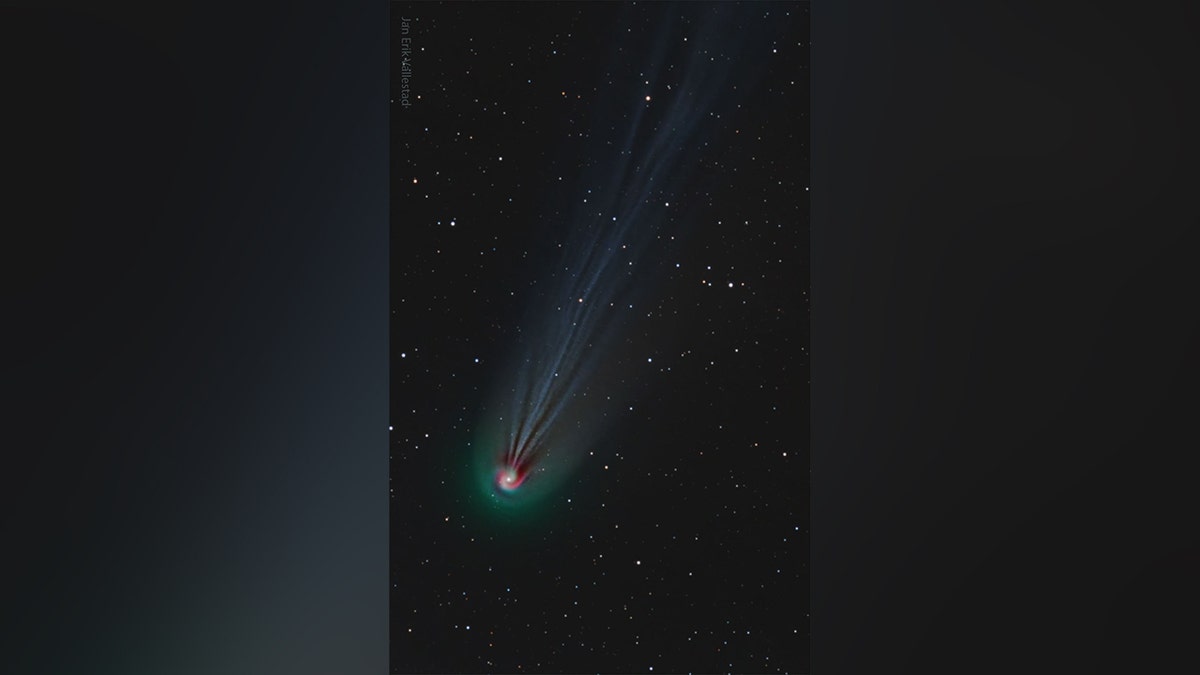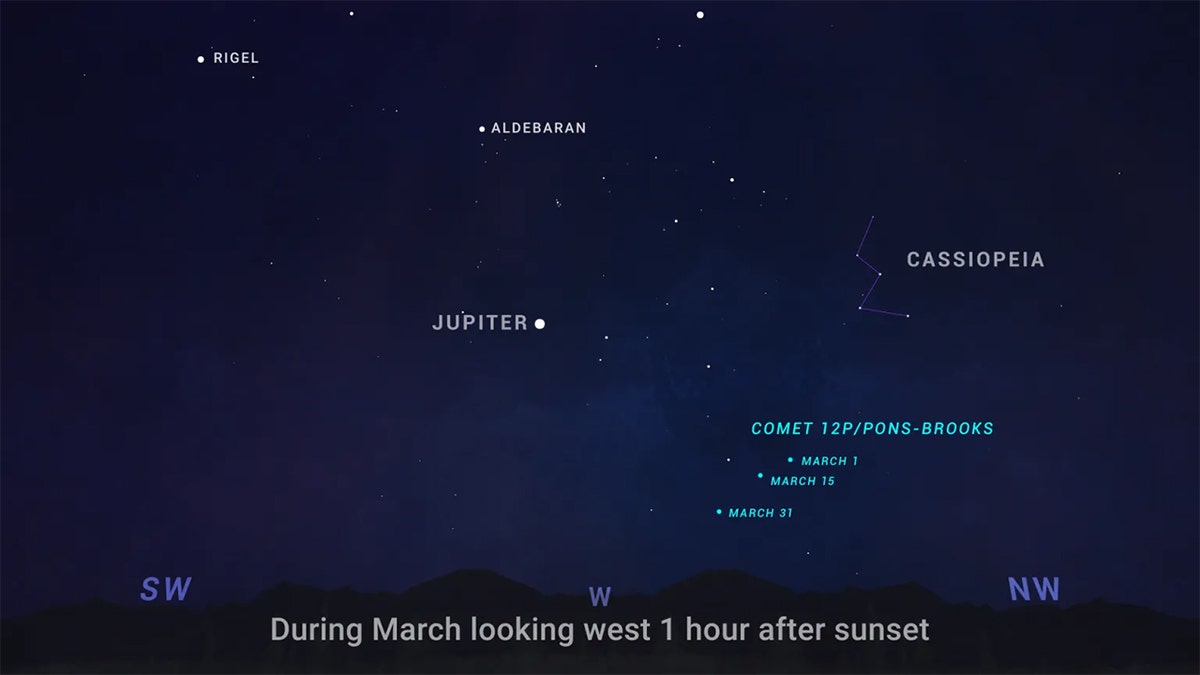Sky watchers may have the opportunity once, maybe twice in their lifetime, to see a comet grow brighter and darker as it looks as if it has a pair of devil horns attached to it as it makes its way toward the sun.
Comet 12P/Pons-Brooks is racing toward its closest approach to the sun in its 71-year orbit, according to NASA. The orbit takes it as far away as the orbit of Neptune and as close as the orbit of Venus. However, because the orbit is tilted, there is no chance of a collision with Earth, according to the space agency.
The comet is about 29 kilometers in diameter and has been observed several times over the centuries, primarily due to its gas outbursts.
According to Space.com, Jean-Louis Pons, who lived from 1761 to 1831, discovered 37 comets, mostly using telescopes and lenses he designed. On July 12, 1812, Pons saw what he described as “a shapeless object with no visible tail,” although over the next month the object became so bright that it could be seen with the naked eye, although still dark.
3 NEW MOONS DISCOVERED ORBITING URANUS AND NEPTUNE

Comet Pons-Brooks is seen in a composite image of three very specific colors. It shows the comet’s ever-changing ion tail in light blue, its outer coma in green, and highlights some red glowing gas around the coma in a spiral. (Image credit and copyright: Jan Erik Vallestad via nasa.gov)
Then, in August of that year, the comet became the brightest comet observed and appeared to have a forked tail.
William R. Brooks, another comet observer, lived from 1844 to 1921, Space.com reported. On September 2, 1883, he observed the comet, albeit by accident.
Eventually it was discovered that Pons and Brooks observed the same comet, albeit 71 years apart, and it was eventually named Pons-Brooks.
Discover the oldest black hole in the universe and brave the mysteries of space

Sky map showing the changing position of Comet 12P/Pons-Brooks in March. Find the comet to the west-northwest once the sky is completely dark. The value decreases as the month progresses. (NASA)
According to NASA, bursts of gas and dust are released from beneath the comet’s surface, brightening the object.
As the comet approaches between March and April, the gas eruptions could cause the comet to brighten enough to be visible to the naked eye under dark skies, especially in late March.
In an image posted on NASA’s Astronomy Image of the Day page, Comet Pons-Brooks appears to have a bright blue tail, a green outer coma, and a spiral of glowing red gas surrounding the coma.
Astronomers said the spiral could be caused by gas being ejected from a slowly rotating core of the comet.
CLICK HERE TO GET THE FOX NEWS APP
The space agency said those hoping to catch a glimpse of the comet could find it deep in the west-northwest part of the sky near the constellation Pisces at the end of evening twilight.
Another unusual coincidence causes the comet to be about 25 degrees from the Sun during the total solar eclipse on April 8. However, it is unclear how bright it will appear to sky watchers that day as the moon obscures the sun.